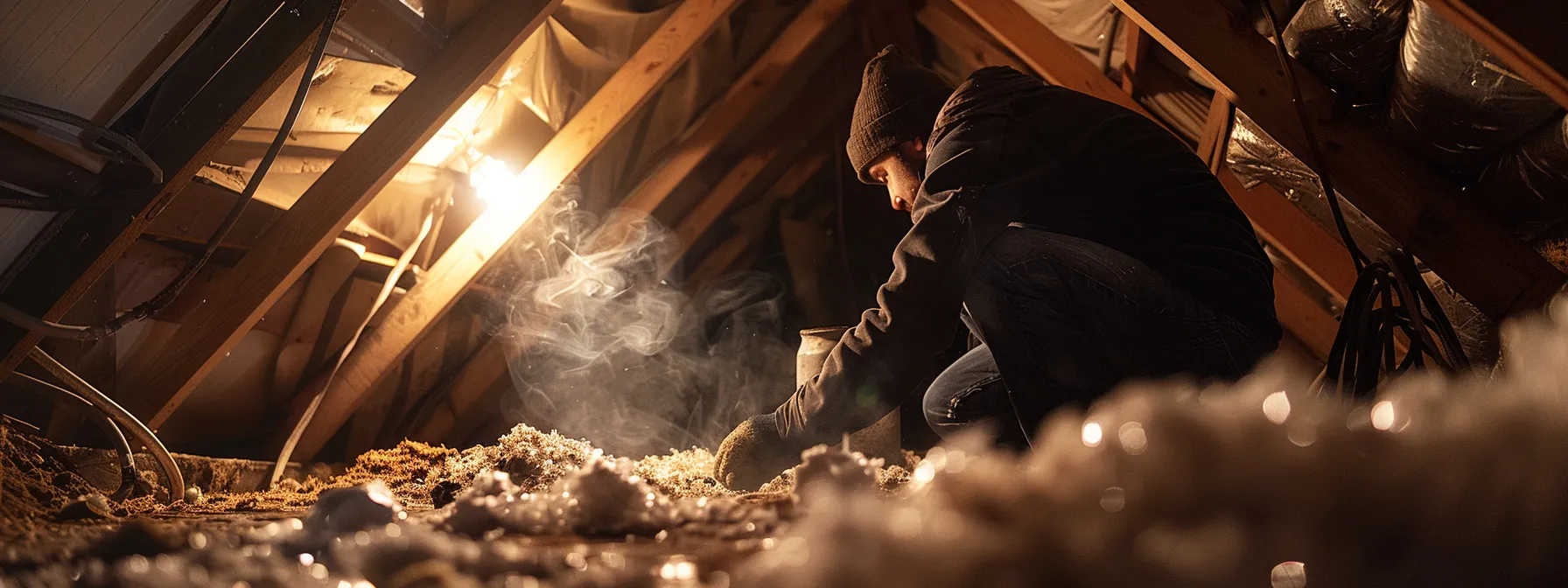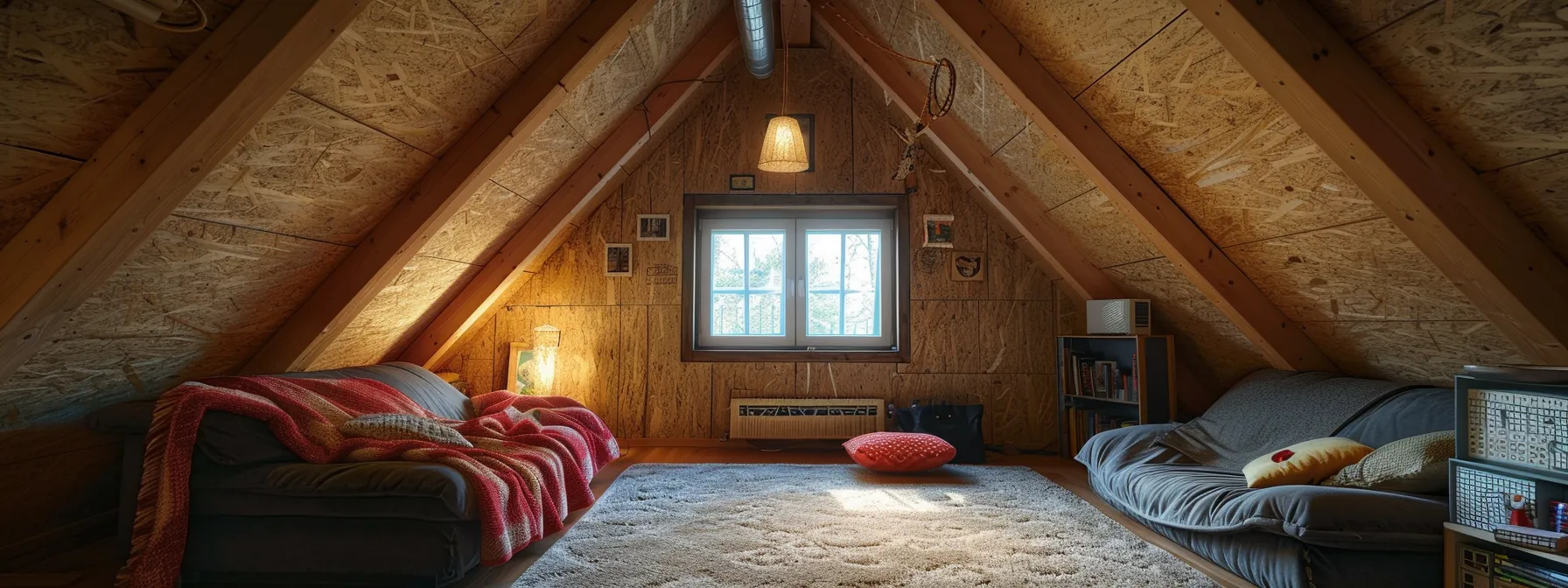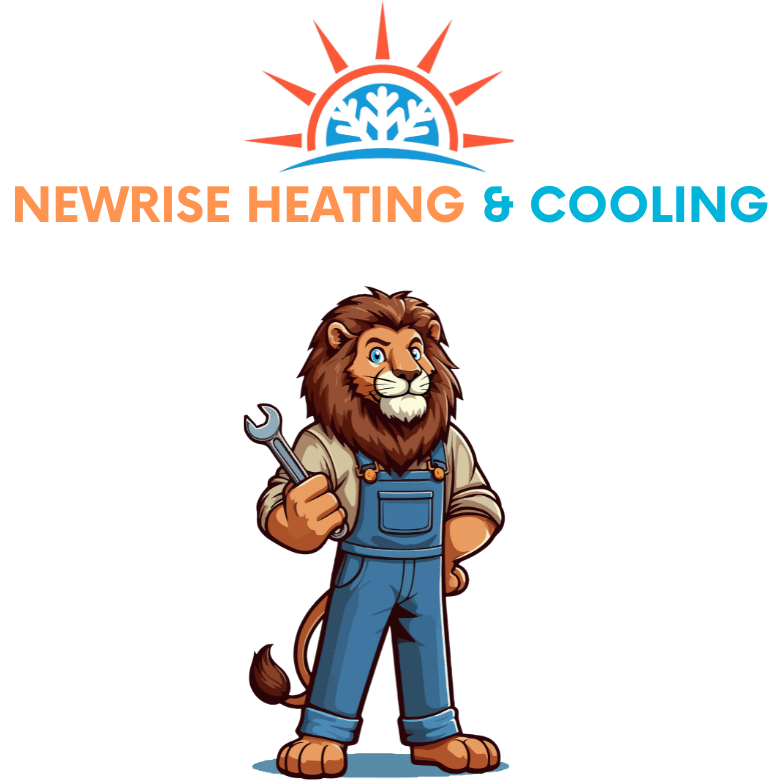Are you tired of dealing with uneven heating in your home? This common issue can lead to discomfort and higher energy bills. In this article, readers will learn how to identify the causes of uneven heating, optimize their HVAC systems, and enhance air circulation through improved ductwork and ventilation. By addressing these factors, homeowners can enjoy consistent temperatures and better energy efficiency. Discover solutions that will make your living space more comfortable, tackle hot and cold spots, and enhance the functionality of your crawl space.
Key Takeaways
- identifying cold spots helps determine causes of uneven heating in a home
- regular maintenance improves HVAC efficiency and addresses heating inconsistencies
- sealing air leaks enhances insulation for better temperature control
- upgrading to energy-efficient windows reduces heating costs and improves comfort
- installing programmable thermostats optimizes heating based on daily routines
Identify the Causes of Uneven Heating in Your Home

Identifying the causes of uneven heating in your home is crucial for maintaining comfort. Homeowners should begin by recognizing cold spots and warm areas, followed by checking for insufficient insulation in the attic and basement. Inspecting for air leaks and drafts can further aid in understanding temperature inconsistencies. Lastly, evaluating the performance of the HVAC unit ensures it operates efficiently and effectively.
Recognizing Cold Spots and Warm Areas
Homeowners can recognize cold spots and warm areas in their homes by paying attention to how different rooms feel throughout the day. For instance, if certain rooms remain chilly even when the air conditioner is running, this could indicate issues with airflow or insulation. To improve energy conservation, conducting a thorough inspection of ductwork and vents may also reveal blockages or leaks that affect the HVAC system’s ability to distribute refrigerant efficiently.
- Pay attention to temperature variations in different rooms.
- Check airflow from vents for cold spots.
- Inspect insulation quality in the home.
- Evaluate ductwork for blockages or leaks.
- Monitor the performance of the air conditioning unit.
Checking for Insufficient Insulation
Checking for insufficient insulation is essential in identifying uneven heating in a home. An energy audit can help homeowners assess insulation levels in areas like attics and walls, revealing spots where heat loss may occur. Dust accumulating around air conditioners and ceiling fans may indicate airflow issues, which can exacerbate temperature differences in various rooms, leading to discomfort and higher energy bills.
Inspecting for Air Leaks and Drafts
Inspecting for air leaks and drafts is essential in addressing uneven heating in a home. Homeowners should examine areas around windows, doors, and vents for any gaps that may allow air to escape or enter, disrupting the central heating system’s efficiency. If leaks are found, applying caulk or consulting an HVAC professional for more extensive repairs could significantly improve heating consistency and reduce energy costs, especially if air conditioners need to work harder to compensate for lost heat.
Evaluating Your HVAC System's Performance
Evaluating the HVAC system’s performance is essential for addressing uneven heating in a home. Homeowners should check if their furnace, boiler, or heat pump is functioning correctly to ensure proper heat transfer and distribution throughout the space. Regular maintenance, such as changing filters and cleaning ducts, can greatly enhance the system’s efficiency, helping to minimize cold spots and improve overall comfort.
- Examine the operation of your heating system, including the furnace, boiler, and heat pump.
- Ensure filters are clean and replace them as needed for optimal airflow.
- Inspect ductwork for leaks or blockages that hinder heat distribution.
- Consider scheduling a professional HVAC evaluation to assess system performance.
Once the causes of uneven heating are clear, it becomes essential to focus on solutions. Improving insulation can make a real difference in keeping your home warm and comfortable.
Improve Insulation for Better Heat Retention

Improving insulation is a key factor in addressing uneven heating within a home. Adding insulation to attics and walls helps maintain optimal temperatures, while sealing cracks and gaps around windows and doors prevents energy leaks. Upgrading to energy-efficient windows can enhance heating system performance, and using weatherstripping and caulking techniques offers further protection. These strategies collectively contribute to better heat retention and HVAC maintenance.
Adding Insulation to Attics and Walls
Adding insulation to attics and walls is essential for enhancing heat retention and maintaining consistent temperatures throughout the home. A well-insulated space allows the forced air system to operate more efficiently, reducing the workload on the air conditioning unit and minimizing pressure fluctuations that can compromise indoor air quality. Homeowners can benefit from using a smart thermostat to better manage temperature settings, ensuring that energy is conserved while achieving optimal comfort.
Sealing Cracks and Gaps Around Windows and Doors
Sealing cracks and gaps around windows and doors is a vital step in improving insulation and achieving better heat retention in a home. Homeowners can utilize weatherstripping to block drafts, ensuring that conditioned air remains inside while outside elements are kept at bay. This simple yet effective troubleshooting measure not only enhances airflow but also helps regulate humidity levels, making it easier to maintain comfort throughout the year. Using a humidifier can further assist in controlling indoor moisture, ultimately contributing to a more stable and energy-efficient living environment.
Benefits of Upgrading to Energy-Efficient Windows
Upgrading to energy-efficient windows offers significant advantages for enhancing heat retention and addressing uneven heating in a home. These windows are designed to minimize heat transfer, which can reduce the workload on an HVAC system, including heat pumps and air conditioning units. Additionally, energy-efficient windows can work in tandem with a programmable thermostat, helping to maintain consistent temperatures while lowering energy bills, leading to better overall comfort for homeowners.
Using Weatherstripping and Caulking Techniques
Using weatherstripping and caulking techniques is an effective way to enhance insulation and improve home heating. By sealing gaps around windows and doors, homeowners can minimize drafts that disrupt the heating and cooling balance within different rooms. Properly sealed areas ensure that warm air stays inside, allowing for more consistent temperatures across the ceiling and floor, which is vital for effective zoning of heating systems.
Insulation holds heat close, but it’s only part of the solution. Next, discover how optimizing your HVAC system can distribute warmth evenly throughout your home.
Optimize Your HVAC System for Even Heating

Regular maintenance and timely filter replacement play vital roles in addressing heating issues within a home. Cleaning and adjusting air vents and registers can improve airflow, while balancing airflow with dampers ensures even heating throughout living spaces. Homeowners may also consider upgrading to a zoned HVAC system for enhanced control. If problems persist, evaluating the need for a system replacement may be necessary.
Regular Maintenance and Filter Replacement
Regular maintenance and filter replacement are crucial for ensuring an HVAC system operates efficiently and evenly heats the home. Clogged filters can restrict airflow, leading to inconsistent temperatures across floors and spaces, which affects overall energy use. Homeowners should schedule routine HVAC Services to inspect and clean systems, as well-maintained units perform better, enhance insulation effectiveness, and create a comfortable living environment.
Cleaning and Adjusting Air Vents and Registers
Cleaning and adjusting air vents and registers is essential to maintaining an even heating environment in a home. Homeowners should regularly inspect vents for dust and debris, which can restrict airflow and lead to hot or cold spots. Ensuring that registers are open and unobstructed allows the HVAC system to distribute air effectively, promoting uniform temperature throughout the living spaces.
| Action | Description |
|---|---|
| Inspect Vents | Check for dust and debris that can block airflow. |
| Clean Registers | Regularly wipe down registers to maintain optimal performance. |
| Adjust Vents | Ensure vents are fully open and unobstructed for balanced airflow. |
| Schedule Maintenance | Consider professional inspection to keep the HVAC system in top shape. |
Balancing Airflow With Dampers
Balancing airflow with dampers is an effective strategy for ensuring even heating within a home. Dampers are adjustable devices installed in ductwork that regulate air flow to different areas, allowing homeowners to redirect heated air where it is needed most. By carefully adjusting these dampers, uneven temperature distributions can be minimized, creating a more comfortable living environment while also enhancing the overall efficiency of the HVAC system.
Upgrading to a Zoned Heating System
Upgrading to a zoned heating system can significantly improve comfort in homes experiencing uneven heating. This system allows homeowners to control the temperature in different areas, or zones, of the house independently, effectively addressing specific heating needs based on usage and occupancy. By adjusting the settings for each zone, homeowners can enhance energy efficiency and avoid overworking their HVAC unit, leading to lower energy bills and a more consistent indoor climate.
- Enhances comfort through individualized temperature control.
- Improves energy efficiency by avoiding unnecessary heating.
- Reduces strain on the HVAC system, extending its lifespan.
Considering a System Replacement if Necessary
When homeowners have exhausted other methods to address uneven heating issues, considering a system replacement may be necessary. An outdated or inefficient HVAC system often struggles to maintain consistent temperatures, leading to discomfort and increased energy costs. Investing in a modern, energy-efficient system can significantly enhance heating performance, making it a worthwhile option for long-term comfort and savings.
You’ve taken steps to balance your home’s temperature. Now, it’s time to explore how smart thermostats and zoning can enhance your comfort and control.
Utilize Smart Thermostats and Zoning Solutions

Installing programmable thermostats in different zones allows homeowners to set customized temperature schedules that align with their daily routines. By monitoring energy usage, families can achieve cost savings while enhancing comfort. Integrating smart home technology further streamlines temperature control, making it simple to adjust settings from anywhere, ultimately addressing uneven heating effectively.
Installing Programmable Thermostats in Different Zones
Installing programmable thermostats in different zones of a home is an effective strategy for managing uneven heating. By allowing homeowners to set specific temperature schedules for each area, these devices respond to varying occupancy patterns and lifestyle needs. For example, families can maintain a comfortable temperature in living spaces during the day while reducing heating in bedrooms at night, ultimately improving both comfort and energy efficiency.
| Zone | Temperature Setting | Time of Day |
|---|---|---|
| Living Room | 72°F | 8 AM – 10 PM |
| Bedrooms | 68°F | 10 PM – 8 AM |
| Kitchen | 70°F | 8 AM – 10 PM |
Setting Customized Temperature Schedules
Setting customized temperature schedules using smart thermostats can significantly enhance comfort while addressing uneven heating in a home. Homeowners can program their heating systems to adjust temperatures according to daily routines, ensuring optimized comfort during peak usage hours and conserving energy during times when rooms are unoccupied. For instance, lowering temperatures in bedrooms at night while maintaining a comfortable level in living areas during the day helps create a balanced indoor climate:
- Program specific temperatures for different zones of the home.
- Adjust settings based on occupancy and time of day.
- Improve energy efficiency and reduce heating costs.
Monitoring Energy Usage for Cost Savings
Monitoring energy usage is a valuable strategy for homeowners looking to achieve cost savings while addressing uneven heating. By utilizing smart thermostats, individuals can track their energy consumption patterns and identify opportunities for reducing costs. For example, homeowners can adjust settings to lower energy use during non-peak hours or when rooms are unoccupied, leading to a more efficient heating system and lower utility bills:
| Zone | Temperature Setting | Time of Day |
|---|---|---|
| Living Room | 72°F | 8 AM – 10 PM |
| Bedrooms | 68°F | 10 PM – 8 AM |
| Kitchen | 70°F | 8 AM – 10 PM |
Integrating Smart Home Technology for Convenience
Integrating smart home technology simplifies the management of heating systems, making it easier for homeowners to ensure comfort throughout their space. Smart thermostats can be adjusted remotely, allowing users to modify settings based on daily routines and preferences. This flexibility helps optimize energy consumption by reducing heating in unused areas, ultimately leading to lower utility bills while addressing issues related to uneven heating:
| Zone | Temperature Setting | Time of Day |
|---|---|---|
| Living Room | 72°F | 8 AM – 10 PM |
| Bedrooms | 68°F | 10 PM – 8 AM |
| Kitchen | 70°F | 8 AM – 10 PM |
Smart thermostats and zoning solutions pave the way for comfort, but there is more to consider. Next, explore how improving air circulation can make your home feel even better.
Enhance Air Circulation Throughout Your Home

Enhancing air circulation is crucial for addressing uneven heating in the home. Using ceiling fans can help distribute warm air more effectively, while keeping interior doors open promotes better airflow. Ensuring vents and returns are unobstructed allows for optimal operation of the HVAC system. Implementing vent boosters in problem areas further assists in achieving balanced temperatures throughout the space.
Using Ceiling Fans to Distribute Warm Air
Using ceiling fans is a practical solution for enhancing air circulation and addressing uneven heating in the home. By running ceiling fans in a clockwise direction during the winter months, homeowners can help distribute warm air that rises to the ceiling, effectively pushing it back down into the living spaces. This simple adjustment can lead to more balanced temperatures throughout different rooms, improving overall comfort and potentially reducing heating costs as the HVAC system operates more efficiently.
Keeping Interior Doors Open to Facilitate Flow
Keeping interior doors open can significantly improve air circulation and help address uneven heating in a home. When doors are left open, warm air can freely flow between rooms, allowing the HVAC system to distribute heat more evenly. This simple practice not only promotes better airflow but also enhances comfort in typically colder areas of the home, reducing the reliance on heating systems and improving energy efficiency.
Ensuring Vents and Returns Are Unobstructed
Ensuring vents and returns are unobstructed is essential for achieving optimal airflow and comfort in a home. When furniture, rugs, or curtains block these openings, it can disrupt the heating and cooling process, leading to uneven temperatures in different rooms. Homeowners should regularly check these areas and rearrange or remove any obstacles to maintain a balanced heating system:
- Check for furniture placement over vents.
- Keep curtains clear of air returns and vents.
- Remove seasonal decorations or clutter around air pathways.
Implementing Vent Boosters in Problem Areas
Implementing vent boosters in problem areas of a home can significantly improve air circulation and address issues of uneven heating. These devices are designed to enhance airflow in specific rooms that may be colder or less comfortable due to inadequate heat distribution. For example, homeowners might notice that a particular bedroom or home office struggles to maintain a consistent temperature; installing a vent booster can help ensure that heated air is effectively channeled into these spaces, enhancing overall comfort and energy efficiency.
Good air circulation makes a home comfortable. For deeper insights, consulting heating professionals can guide you on the best strategies for efficiency and warmth.
Consult With Heating Professionals for Expert Advice

Understanding when to seek professional assessment is vital for homeowners facing uneven heating issues. Exploring potential costs and benefits helps in making informed decisions. Finding a reputable HVAC technician ensures quality service, while preparing for professional inspections ensures efficient upgrades. Each of these areas will provide homeowners with essential insights for maintaining a comfortable home environment.
When to Seek Professional Assessment
Homeowners should seek professional assessment when uneven heating persists despite implementing basic troubleshooting measures. An HVAC technician can conduct a comprehensive evaluation to identify underlying issues, such as ductwork problems, system inefficiencies, or insulation shortcomings. Recognizing when to involve a specialist can lead to timely solutions, ensuring a comfortable living environment and optimizing energy efficiency.
Understanding Potential Costs and Benefits
Understanding potential costs and benefits is essential when consulting with heating professionals about uneven heating in a home. Homeowners might incur costs for assessments or repairs, but these expenses can lead to significant long-term energy savings by improving system efficiency. Additionally, identifying and addressing problems early can prevent larger issues down the line, ensuring a comfortable living environment while maximizing comfort and reducing heating bills.
Finding a Reputable HVAC Technician
Finding a reputable HVAC technician is vital for homeowners addressing uneven heating issues. A reliable professional will have strong customer reviews and necessary certifications, indicating expertise in diagnosing and resolving HVAC problems. Homeowners should consider asking for recommendations from neighbors or friends who have previously hired HVAC specialists to ensure they find someone trustworthy and capable of providing effective solutions.
Preparing for Professional Inspections and Upgrades
Preparing for professional inspections and upgrades involves gathering essential information about the home’s current heating system. Homeowners should document specific areas experiencing uneven heating, including temperature discrepancies and locations of cold spots. This preparation allows HVAC professionals to pinpoint issues more efficiently, ensuring a thorough evaluation and the implementation of effective solutions to enhance overall comfort and energy efficiency.
Conclusion
Addressing uneven heating in a home is essential for maintaining comfort and improving energy efficiency. Homeowners can take actionable steps such as identifying cold spots, enhancing insulation, and optimizing their HVAC systems to create a consistent indoor temperature. Regular maintenance and the use of modern technology, like smart thermostats, can significantly contribute to achieving balanced heating. By prioritizing these strategies, homeowners can ensure a comfortable living environment while reducing energy costs.



